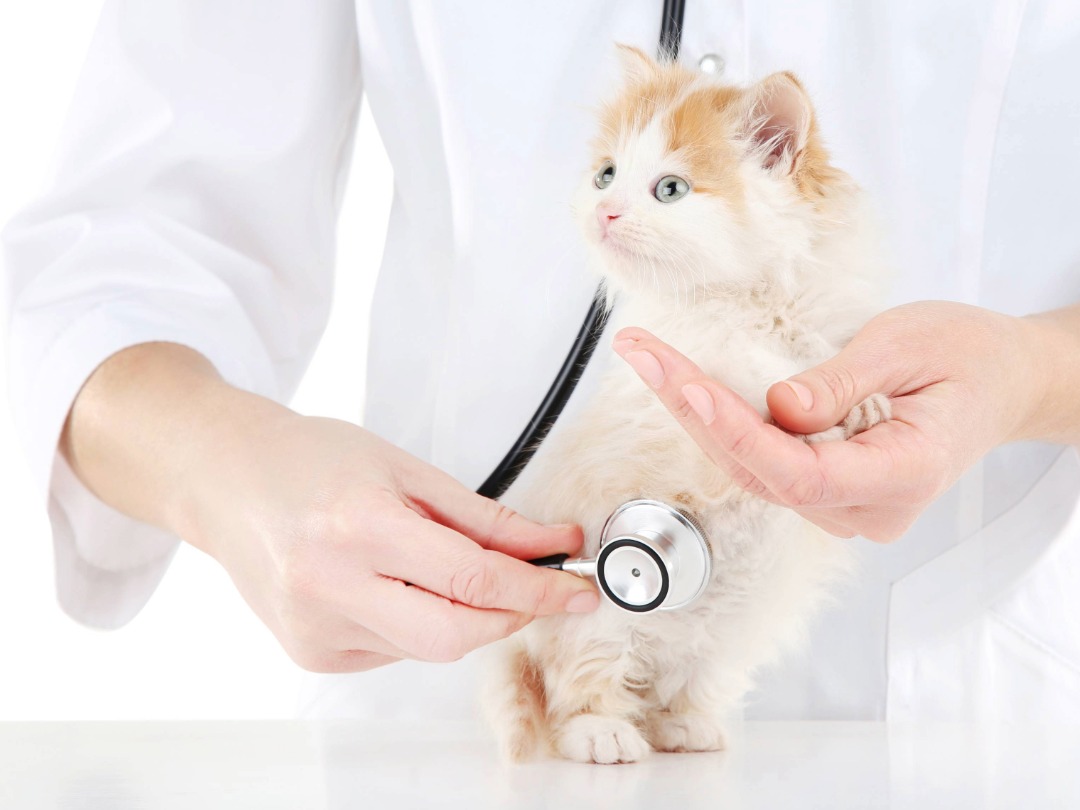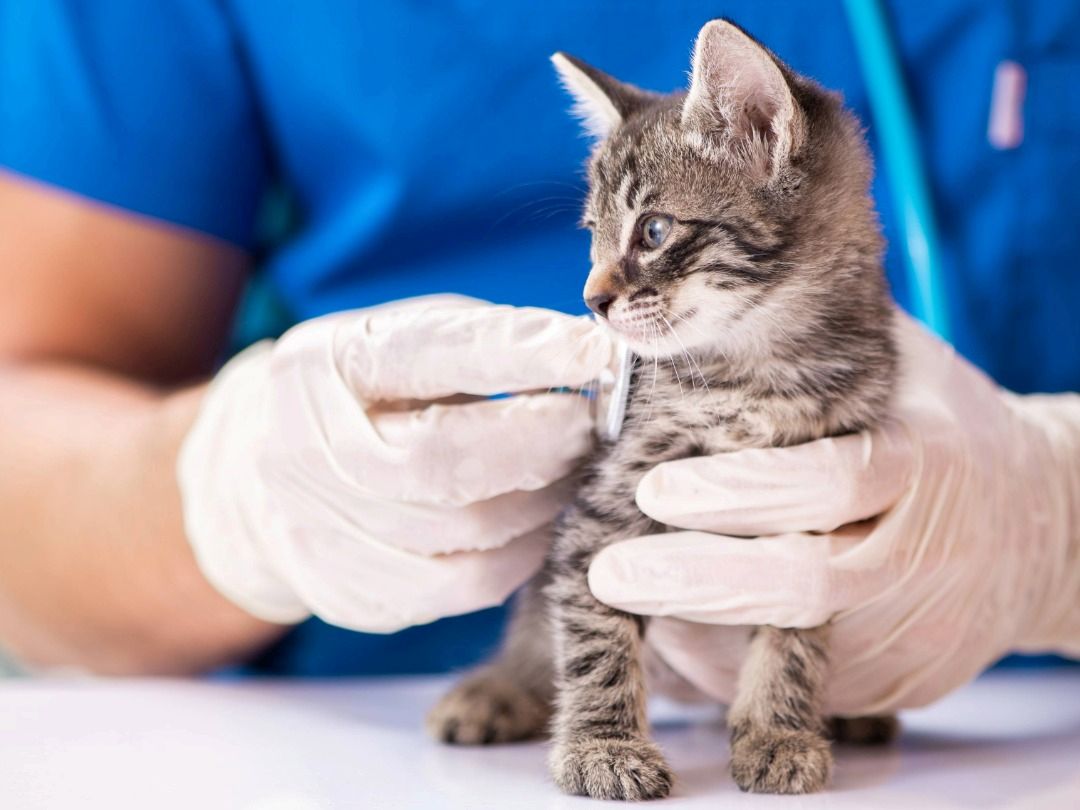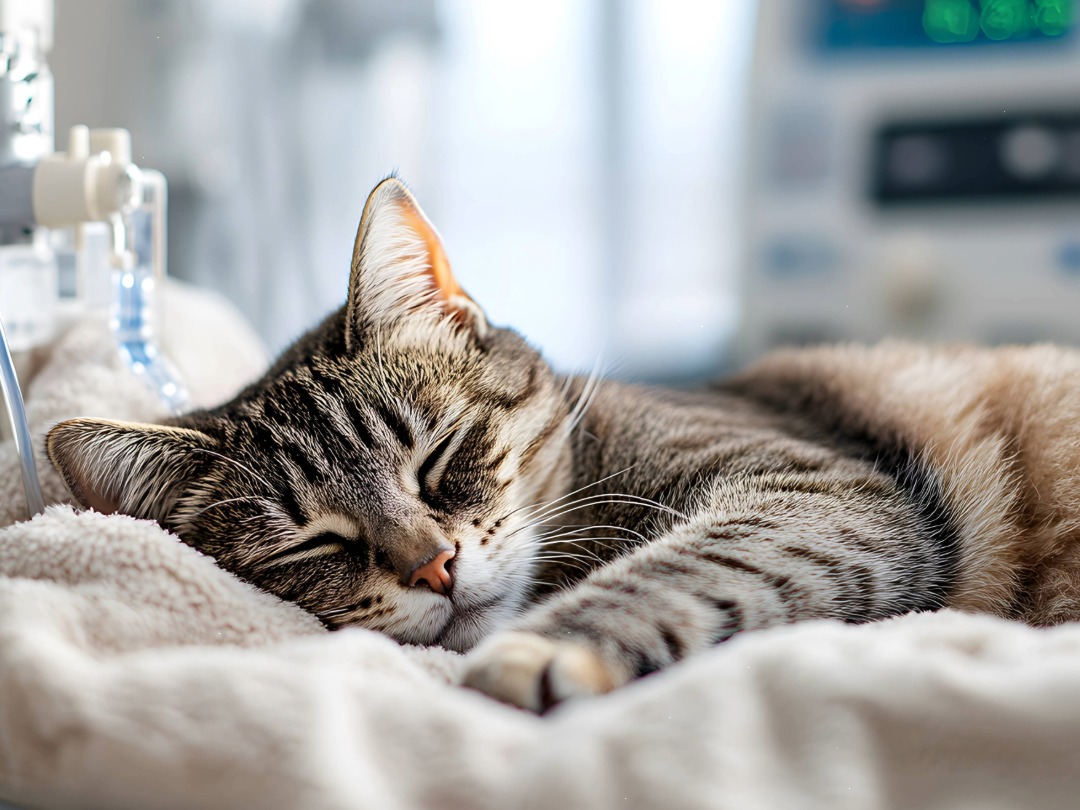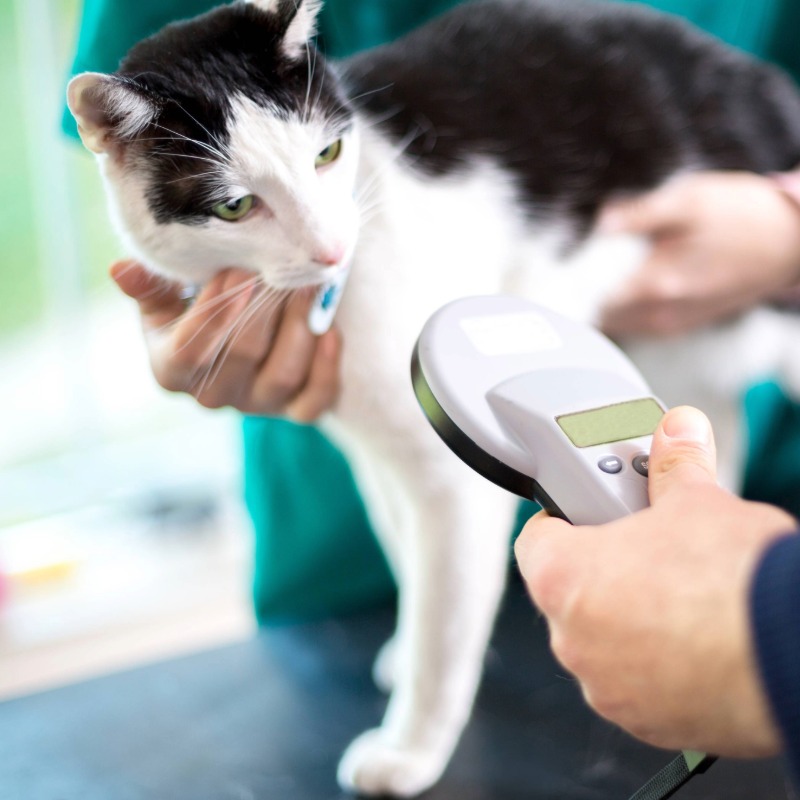Microchipping Registration & Desexing for Cats

Microchipping & Registration
Microchipping and registering your cat is not only vital for reuniting lost pets with their owners, it’s also a legal requirement in NSW! If a cat is ever lost and is handed in at a veterinary clinic or animal shelter a microchip scanner is passed over the animal to reveal the unique code. The vet or animal shelter can then refer to the database to identify the name, address and phone number of the owner, so they can be reunited.
A microchip is about the size of a grain of rice and is injected under your pet’s skin, usually on their back near the shoulders. Often breeders or rescue organizations will have already implanted a microchip in your pet before you take them home, but our vets will always double-check with a scanner if a microchip can be detected. If your pet is not yet microchipped, this can be done during a normal consultation at our clinic.
When a microchip is scanned (a completely painless process, just a little beep!), a unique 15-digit number appears. This number should link to the NSW Pet Registry database and contain the owner’s contact details. This statewide database is only accessible to vets and animal control council workers and your contact details will not be shared outside of these authorized people. Often, we find owners have been told by a breeder that their new pet has been microchipped, which is true, but without the crucial step of adding your details to the NSW Pet Registry, that microchip is useless.
There have been many improvements to the NSW Pet Registry over the years to make life easier for cat owners. You can now pay your pet registration fees online and change your address or contact details through the Service NSW website here!



Microchip Implantation & Lifetime Registration: How to avoid extra fees and fines
- It is a legal requirement in NSW that all cats must have a microchip inserted under their skin by the time they are 12 weeks old OR at the time they are adopted, whichever occurs FIRST. The corresponding microchip number must be entered into the NSW Pet Registry with the owners contact details at this time.
- It is a legal requirement in NSW due to recent legislation change that all cats and dogs are registered with the council and have their Lifetime Registration fee paid by the time they are 12 weeks old. This can be done online through Service NSW or at your local council.
- It is a legal requirement that all cats are de-sexed by 4 months old. In some cases, there are medical reasons related to size, breed or other health conditions that mean your vet may recommend delaying de-sexing until your pet is older. In these cases, the vet can add a note to your pet’s microchip to indicate that your pet will be desexed after the legal age under veterinary advice. If this applies to you and your pet, please discuss this with your vet ASAP, because the council can send you a hefty fine if your pet is not desexed by the legal age without veterinary exemption!
- Remember that your vet or receptionist can check your pet’s microchip to make sure everything is in order and advise you of any steps you need to take to complete the registration process.

Desexing
Desexing your cat is a very common surgical procedure that prevents them from being able to reproduce. In male cats it is commonly referred to as “castration”, and in female pets as “spaying”. Other than dentistry, this is the most frequent surgery performed by our vets. In most cases your cat is dropped off to us in the morning for their surgery and they can return home the same day.
There are many benefits to desexing your cat, and they include:
- Preventing unwanted litters, which can be very costly and can add to the already overwhelming number of stray animals that are put to sleep each year
- Prevention of pyometra (infection of the uterus) and mammary tumours (breast cancer) in females
- Stopping the “heat” cycle in females
- Decreasing aggression towards humans and other animals
- Being less prone to wander off or run away
- Reduction of council registration fees and fines
Before Surgery
- Your vet will discuss what is involved in your cat’s surgery and recovery during your kitten health checks. If we haven’t seen your cat before, they will require a checkup with one of our vets before booking their surgery.
- A blood test may be performed prior to surgery to check vital organ function. This is optional and owners can decide if they would like to go ahead with this test. It can be run in house on the same day of the surgery, but the preferred option is to run a less expensive and more comprehensive blood test at least a few days before surgery. Your vet will discuss this with you in more detail during your cat’s health check!

- Your cat should not have access to food after midnight the night before surgery. They should still have access to water up until 8am the day of their surgery. There are some exceptions to this rule such as diabetic pets and rabbits, so please discuss fasting with us if you are unsure.
- Once your cat is in hospital, the vet will perform a thorough physical examination before administering the anaesthetic.
- Intravenous fluid therapy (aka a “drip”) is required during most types of surgery. This will be discussed with you prior to the procedure.
- To ensure your cat is as comfortable as possible, pets will receive pain relief as part of the desexing procedure, and we may prescribe medication for you to administer at home for a few days after the procedure.
After Surgery
- Your cat will be sent home with a discharge letter outlining possible side-effects of the anaesthesia including drowsiness, vocalising and nausea – these side effects normally resolve within 24 – 36 hours of surgery. Your discharge letter will also include instructions for medication and home care as well as when to book your pet’s post-op checkup.
- Keep your pet as calm and quiet as possible until their post-op appointment in 10 – 14 days. Overactive cats are prone to breaking their sutures or developing a seroma (build-up of fluid at the incision site). Keeping them quiet is essential to allow the wound to heal.
- Ensure your cat’s resting/sleeping area is clean to avoid infection.

- Check the surgical wound at least twice daily for any signs of infection or disruption (e.g. bleeding, swelling, redness or discharge). Contact the vet immediately if any of these occur.
- Prevent your cat from licking or chewing the wound. Special cone-shaped collars called e-collars assist with this problem. Chewing or licking can remove the sutures and cause infection so most pets will be sent home with an e-collar.
- Make sure your cat comes back to see us at the recommended time for their post-op checkup, where we will remove any external sutures

